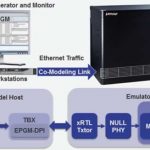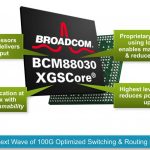In the rapidly evolving landscape of artificial intelligence (AI) and data-intensive applications, the demand for high-performance interconnect technologies has never been more critical. Even the 100G Interconnect is already not fast enough for infrastructure applications. AI applications, with their massive datasets… Read More
Tag: 100g
100G/200G Electro-Optical Interfaces: The Future for Low Power, Low Latency Data Centers
Electrical copper interconnects, once the backbone of data center networks, are facing growing challenges. Rapid expansion of AI and ML applications is driving a significant increase in cluster sizes within data centers, resulting in substantial demands for faster I/O capabilities. While the surge in I/O requirements is … Read More
Data Center Explosion Push for Fast Adoption of 25G
The data center rack server market is estimated to growat a high Compound Annual Growth Rate (CAGR) of 20% to reach $90 billion by 2021. Such growth is due to the significantly rise in the number of connected devices, the growth in the volume of data per device and theneed for quick processing of high-volume data. Much of these data … Read More
Testing Ethernet with virtual co-modeling
Ethernet is suddenly a hot topic in SoC design again. The biggest news may be this: it’s not just the cloud and enterprise networks. Those are still important applications. The cloud is driving hard for more ports at 25G server and 100G switch speeds according to a recent Dell’Oro Group report. Enterprise networks are driving for… Read More
Does Multiprotocol-PHY IP really boost TTM?
I have often written in Semiwiki about high speed PHY IP supporting Interface protocols (see for example this blog), the SoC cornerstone, almost as crucial as CPU, GPU or SDRAM Memory Controller. When you architect a SoC, you first select CPU(s) and/or GPU(s) to support the system basic functionality (Processor for Mobile application,… Read More
Broadcom announces an HFC
For a long time Cisco had a very high end product whose official internal name during its years of development was HFR, which stood for Huge F***ing Router (the marketing department insisted it stood for ‘fast’). Eventually it got given a product number, CRS-1, but not before I’d read an article about it in the… Read More







